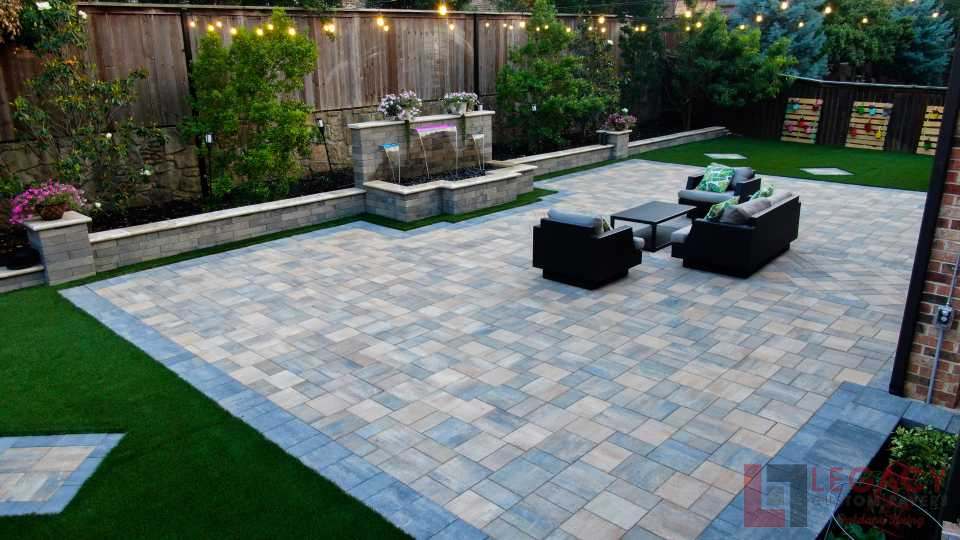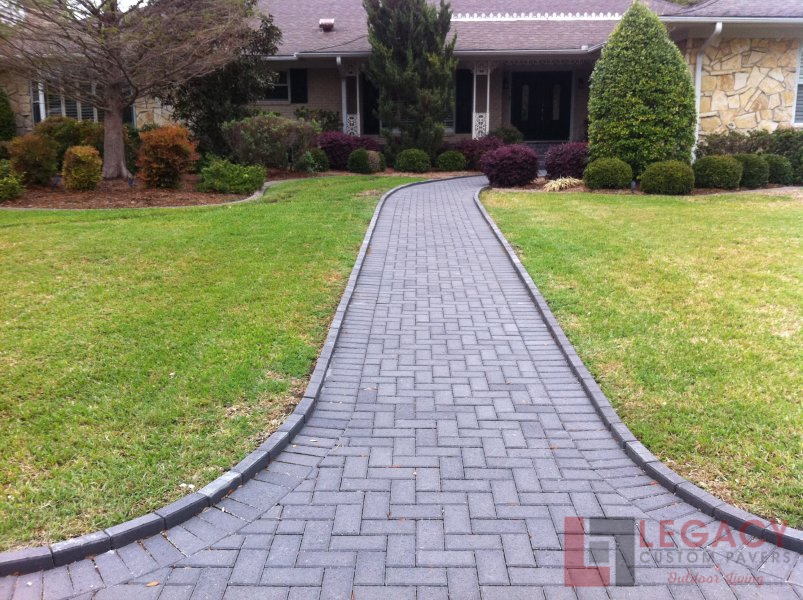Paver installation in North Texas is a popular choice for homeowners looking to enhance the beauty and functionality of their outdoor spaces. Whether considering a new driveway, a patio makeover, or a pool deck renovation, pavers offer an attractive and durable solution. In this in-depth guide, we will explore the world of paver installation in North Texas, covering everything from the various types of pavers to the step-by-step installation process. By the end of this article, you’ll clearly understand how to transform your outdoor area into a stunning and functional space.
Understanding Pavers
What are Pavers?
Pavers are pieces of stone, concrete, or clay used to create solid and visually appealing surfaces for outdoor areas. They come in various shapes, sizes, and colors, allowing homeowners to choose the perfect pavers to match their aesthetic preferences and design ideas.
Types of Pavers
- Concrete Pavers are the most versatile and budget-friendly paver option. Concrete pavers come in various styles and colors, making them suitable for multiple design concepts.
- Stone Pavers: Natural stone pavers, such as granite, limestone, or travertine, offer a timeless and elegant look. While they can be pricier than concrete, their durability and beauty make them a worthwhile investment.
- Clay Pavers: Clay pavers are known for their rustic charm and Old-World appeal. They are excellent for creating a classic, traditional look in outdoor spaces.
Advantages of Paver Installation
Paver installation in North Texas comes with numerous advantages, making it a top choice for homeowners:
Durability
One of the most significant benefits of pavers is their durability. North Texas experiences extreme weather conditions, from scorching summers to occasional cold snaps. Pavers are built to withstand these conditions, ensuring they last for years without showing signs of wear and tear.
Aesthetic Appeal
Various paver materials and design options allow homeowners to create a customized and visually appealing outdoor space. Whether you prefer a modern, sleek look or a more rustic and traditional design, pavers can be tailored to your style.
Low Maintenance
Pavers are relatively low-maintenance compared to other outdoor surface options. They require minimal care to stay looking their best, which means less time and effort spent on upkeep.
The Paver Installation Process
Planning
The first step in any successful paver installation project is thorough planning. This phase involves choosing the right type of pavers, deciding on the layout and design, and calculating the quantity needed for your project. During this stage, you’ll work closely with your contractor or designer to ensure your vision becomes a reality.
Site Preparation
Proper site preparation is crucial for a long-lasting paver installation. This step includes:
- Excavation: Removing the existing surface or soil to create a level base.
- Base Installation: Adding a stable and well-compacted base material, such as crushed stone, to provide a solid foundation for the pavers.
- Drainage Considerations: Ensuring proper drainage prevents water from pooling on the surface.
Paver Installation
Once the site is prepared, the actual paver installation begins. This step involves:
- Laying the pavers carefully according to the chosen pattern or design.
- Cutting pavers to fit around edges or obstacles as needed.
- Checking for proper alignment and uniform spacing between pavers.
Sand and Sealant
After the pavers are in place, fine sand is spread over the surface. This sand fills the gaps between the pavers, creating a stable and secure feeling. Additionally, a sealant is applied to protect the pavers from stains and enhance their longevity. The sand also brings out the natural colors and textures of the pavers, adding to their visual appeal.
Maintenance Tips
To keep your paver installation looking its best and ensure its longevity, consider the following maintenance tips:
- Regular Cleaning: Regularly sweep debris, leaves, and dirt to prevent them from settling between the pavers.
- Stain Removal: Deal with any stains promptly using appropriate cleaning products or methods. Standard colors include oil, rust, or food and beverage spills.
- Reapply Sealant: Over time, the sealant may wear off. Reapply sealant as needed, usually every few years, to maintain the pavers’ protection and appearance.
- Periodic Inspections: Inspect your paver installation periodically for any signs of shifting, settling, or damage. Address any issues promptly to prevent further problems.
Conclusion

Modern Pavers (crab orchard color) along with Water Feature & Seat Wall with Travertine (bullnose) caps and Synthetic Grass added.
Paver installation in North Texas is a fantastic way to transform your outdoor spaces, adding beauty and functionality to your home. With various material options and a well-executed installation process, you can enjoy the benefits of pavers for years. Whether aiming for a modern, sleek look or a classic, timeless design, pavers offer versatility and durability that will exceed your expectations.
FAQs
1. How long does paver installation typically take?
The duration of a paver installation project varies depending on factors such as the project’s size and complexity. However, most projects can be completed within a few days to a week.
2. Are pavers suitable for all climates in North Texas?
Yes, pavers are designed to withstand the diverse climate conditions in North Texas, including scorching summers and occasional cold spells.
3. Can I install the pavers myself, or should I hire a professional?
While DIY paver installation is possible, hiring a professional for a more precise and long-lasting result is generally recommended, especially for larger or more complex projects.
4. What is the average cost of paver installation in North Texas?
The cost of paver installation varies based on factors such as the type of pavers chosen, the size of the area to be covered, and labor costs. It’s advisable to obtain quotes from local contractors for accurate pricing.
5. Are pavers eco-friendly?
Pavers are considered an eco-friendly choice as they allow for proper water drainage and reduce runoff, which can help protect the environment by preventing water pollution and soil erosion.
If you ever need a paver installation solution in the Dallas/Fort Worth area, we’re here to help! Give us a call or request a free estimate.
